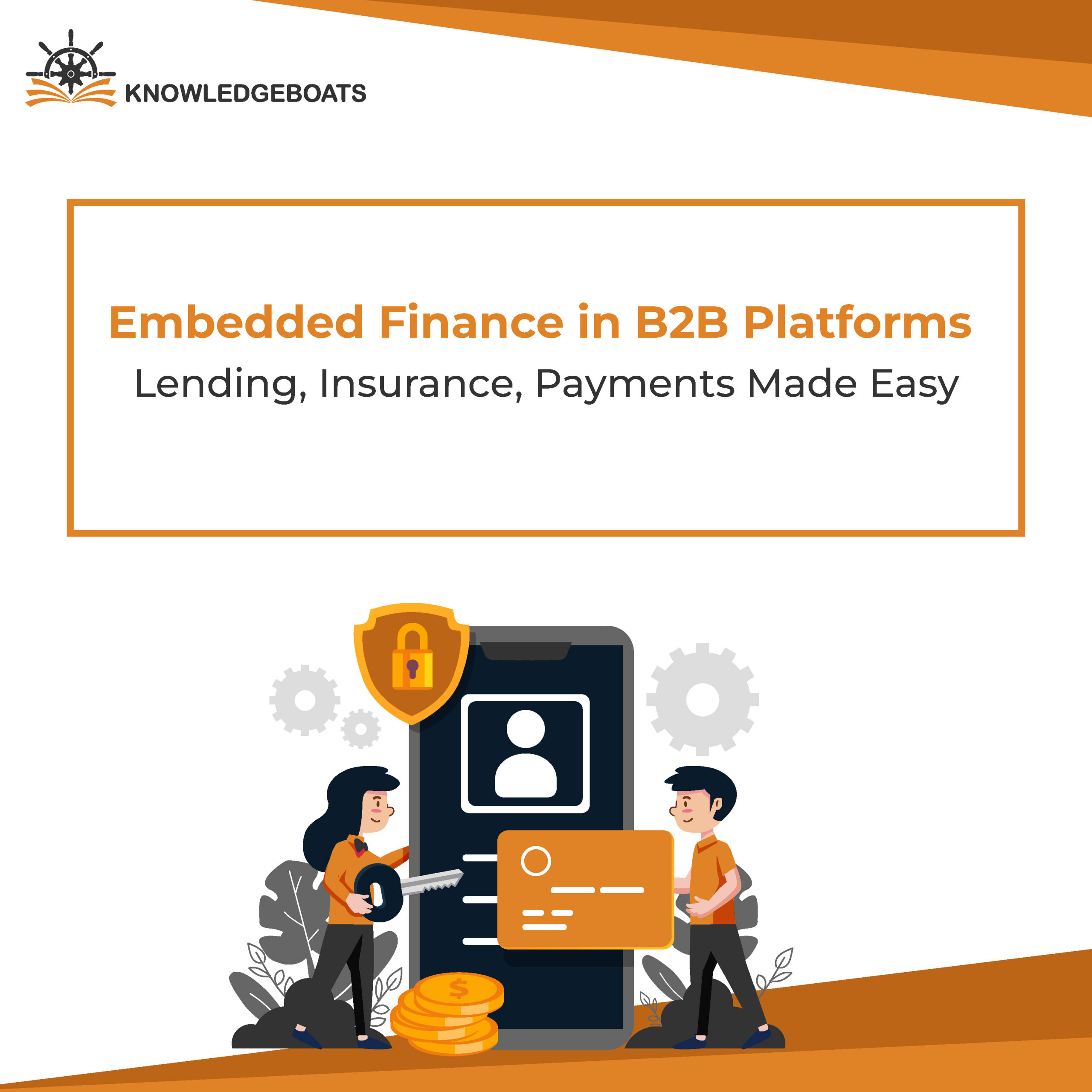
Every B2B platform has a critical point of friction: the moment a user has to leave your ecosystem to solve a financial problem. It could be applying for a loan to purchase inventory, securing insurance for a large shipment, or even just reconciling a complex payment. Every time they leave, you risk losing their attention, their engagement, and potentially their business.
But what if those friction points became your platform’s greatest strengths? What if, instead of being a hurdle, accessing financial services became a seamless, value-added feature of your core product?
This is the strategic promise of embedded finance in B2B. It represents a fundamental shift from viewing your platform as a simple tool to positioning it as the central operating system for your customers’ business. It’s about integrating lending, insurance, and payments so deeply into your user experience that they become an invisible, effortless part of the workflow.
What is Embedded Finance in B2B Platforms?
Embedded finance is the contextual integration of financial services into non-financial software and platforms. The core distinction between this and traditional financial services lies in the user journey. The old model forces businesses to “go to the bank.” The new model brings the bank’s services directly to the user, precisely at their moment of need, within the platform they already trust.
For enterprises and SMBs, this means financial products are no longer separate, cumbersome processes. Instead, the financial layer becomes a native, invisible part of their daily operations, whether they’re using accounting software, a logistics platform, or a vertical SaaS solution.
The Core Pillars: Lending, Insurance, and Payments
While the applications are broad, the current revolution in B2B embedded finance platforms is driven by three critical services that solve immediate, high-stakes business challenges.
1. Embedded Lending: From Transactional Tool to Strategic Growth Partner
Working capital constraints are a perennial challenge for businesses of all sizes. Embedded lending solutions for B2B address this by providing frictionless access to capital, turning your platform into a growth partner.
- How it Works: Your platform already holds a wealth of data on your users, the transaction volume, sales history, and invoice frequency. By leveraging this data, you can underwrite and offer contextual credit products in real-time. This isn’t a blind offer; it’s a data-driven solution, from short-term loans and lines of credit to invoice financing.
- Use Case in Focus: A wholesale B2B marketplace like Faire offers net 60 payment terms to its retailers. This isn’t just a feature; it’s a powerful form of embedded credit and working capital in B2B that directly enables retailers to buy more inventory. The platform facilitates the transaction and the financing, creating a powerful, self-reinforcing loop.
2. Embedded Insurance: De-Risking Transactions to Drive Velocity
From supply chain disruptions to project liabilities, risk is a constant in B2B commerce. Embedded insurance for B2B transactions transforms insurance from a complex, standalone purchase into a simple, integrated risk management tool.
- How it Works: Coverage is offered at the logical point of need. A freight management platform can present a per-load cargo insurance option with a single click during the booking process. This eliminates the need for cumbersome annual policies or third-party broker negotiations for individual transactions.
- Use Case in Focus: A logistics platform using an API to offer shippers instant cargo insurance doesn’t just add a feature; it increases user confidence. By making it easy to de-risk a high-value shipment, the platform encourages larger and more frequent transactions.
3. Embedded Payments: Curing the B2B Accounts Receivable Headache
B2B payments are notoriously inefficient, bogged down by paper invoices, manual reconciliation, and slow payment cycles that hurt cash flow. Embedded payments in B2B SaaS platforms streamline this entire workflow.
- How it Works: Payment processing, invoicing, and reconciliation are integrated into a single, automated loop. An industry-specific platform, like Toast for restaurants, provides scheduling and ordering software and becomes the central hub for all financial transactions.
- Use Case in Focus: By embedding payments, an accounting software platform can allow a user to issue an invoice with a “Pay Now” link, accept digital payment, and automatically mark the invoice as paid. This directly reduces Days Sales Outstanding (DSO) for their customer tangible business outcome that builds deep product loyalty.
Why Embedded Finance is a Mandate for B2B Growth
Integrating financial services is a powerful business strategy that directly impacts key growth metrics.
- Unlock Unprecedented Customer Stickiness and LTV: When your platform solves mission-critical financial challenges, it becomes indispensable. The cost and friction of switching to a competitor that lacks these embedded features become prohibitively high, drastically reducing churn. This is how embedded finance drives customer loyalty in B2B.
- Develop High-Margin, Diversified Revenue Streams: Move beyond SaaS subscription fees. Embedded finance lending insurance payments allow you to generate revenue from payment processing fees, loan origination, or insurance commissions. This creates a new, high-margin income stream that scales with your customers’ success.
- Turn Data into a Competitive Moat: Your platform’s transactional data is a powerful asset. By using it to underwrite and offer superior, personalized financial products, you create a data-driven advantage that new entrants and traditional financial institutions cannot easily replicate.
The Engine Room: API-Driven Fintech and BaaS
This strategic shift is enabled by a robust ecosystem of fintech and embedded finance providers. Modern Banking-as-a-Service (BaaS) platforms offer powerful, API-driven embedded finance solutions that handle the heavy lifting of compliance, regulation, and technology. This allows any B2B platform to integrate financial products without having to become a bank themselves, dramatically lowering the barrier to entry.
The Future of Embedded Finance in B2B: From Feature to Foundation
We are at the early stages of this transformation. The future of embedded finance in B2B will see even deeper integrations that anticipate business needs. Think of a supply chain platform where financing and insurance are automatically adjusted based on real-time shipment data, or an ERP system that offers integrated treasury management and early wage access for employees.
For B2B platform leaders, the landscape is clear. There are challenges in implementing embedded finance in B2B, from navigating regulatory complexities to ensuring data security. However, the strategic cost of inaction is far greater. Platforms that fail to embrace this shift will risk commoditization. Those that successfully weave embedded financial services for enterprises into their core offering will become the undeniable, value-creating ecosystems that define their industries.
The question is no longer if your platform should have a financial strategy, but how you will leverage embedded finance to build a more valuable, defensible, and profitable business.



